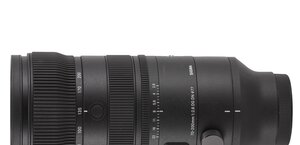Sony E 16 mm f/2.8
3. Build quality
The dimensions of the indicated lenses are very similar. The photo below presents the Sony E 16 mm f/2.8 along the Olympus M Zuiko Digital 17 mm f/2.8 and the Panasonic LUMIX G 20 mm f/1.7 ASPH.
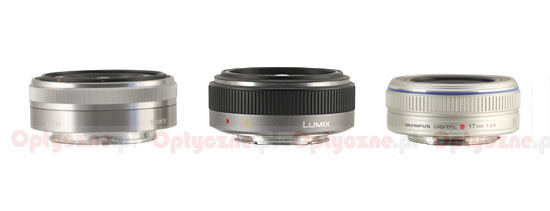 |
Please Support UsIf you enjoy our reviews and articles, and you want us to continue our work please, support our website by donating through PayPal. The funds are going to be used for paying our editorial team, renting servers, and equipping our testing studio; only that way we will be able to continue providing you interesting content for free. |
- - - - - - - - - - - - - - - - - - - - - - - - - - - - - - - - - - - - - - - - - - - - - - - -
As it was in the case of the NEX-5 camera and the 18-55 mm f/3.5-5.6 OSS kit lens, we have mixed feelings about the material the tested instrument is made of . At first glance it commands respect because a metal barrel is not a typical feature among the lenses of this class. On the other hand, though, we doubt whether it would stand the test of time, as the camera and the kit lens, mentioned above, had some serious problems with it.
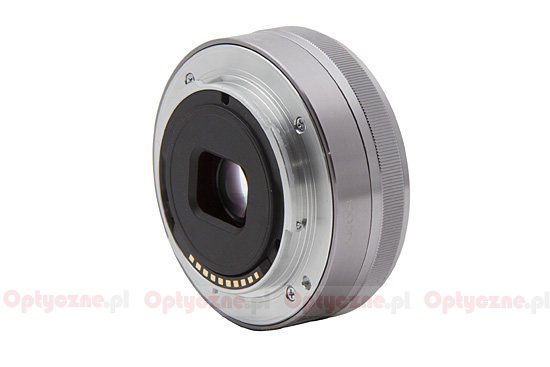 |
The construction of the lens, as it befits a „pancake”, is very simple. It starts with a metal mount behind which you can find the widest part of the lens with its name on it. Further on we see a ribbed focus ring - quite narrow but very precise. At the end we have a thread 49 mm in diameter. The same diameter features the kit NEX lens so the filter users will be able to swap filters between both models. The lens doesn’t change its dimensions during its work.
The optical construction consists of 5 elements in 5 groups with one aspherical element. The aperture is made of seven diaphragm blades and can be closed down to f/22.
The fact that Sony has also launched two screw- in converters which can be attached to the thread is an interesting tidbit. The first of them is a wideangle “fisheye” Sony VCL-ECF1. It consists of 4 elements positioned in 4 groups and it creates the fisheye effect with the effective focal length of 15 mm.
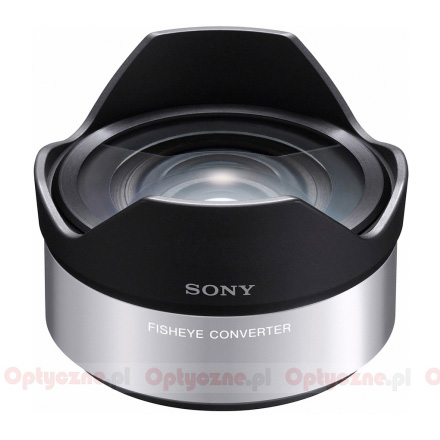 |
The second converter is a wideangle VCL-ECU1, which transforms the tested model into even more wideangle one - the equivalent of the full frame 20 mm device.
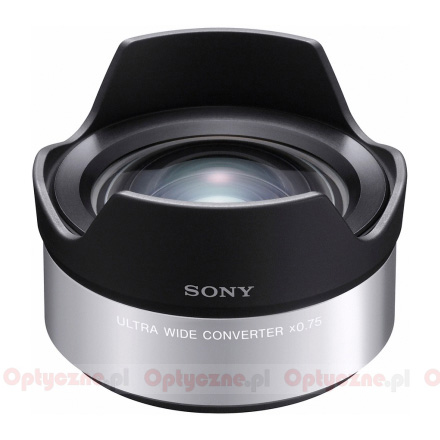 |
Stabilization
Due to small dimensions, the lens wasn’t equipped with stabilization.




